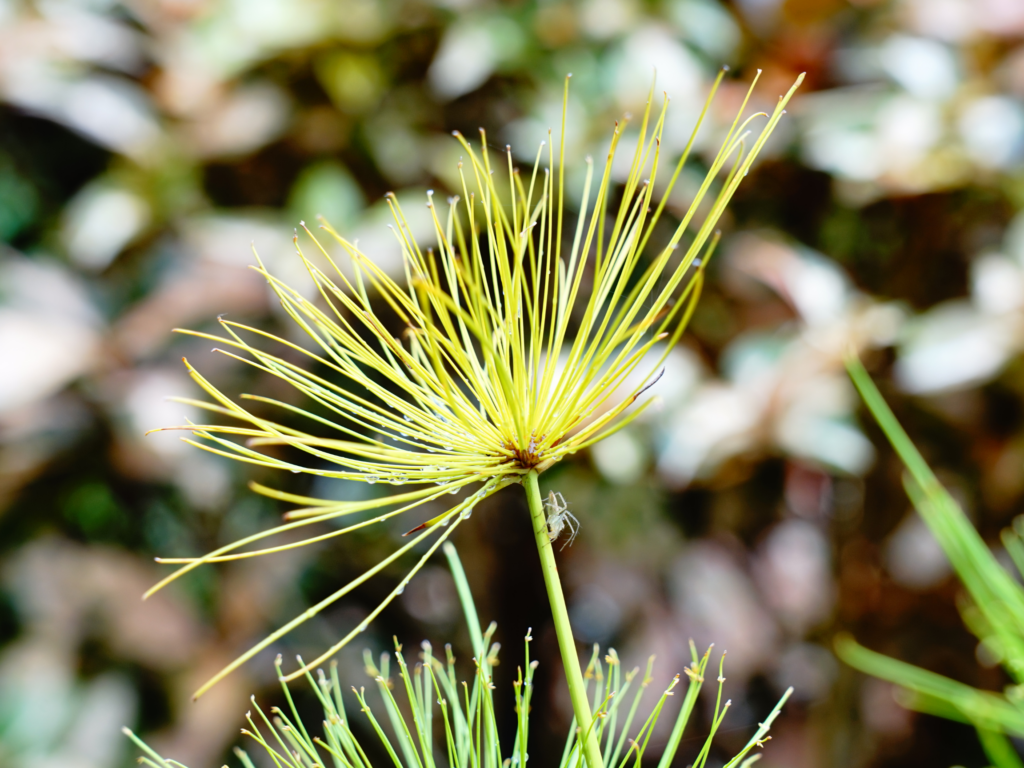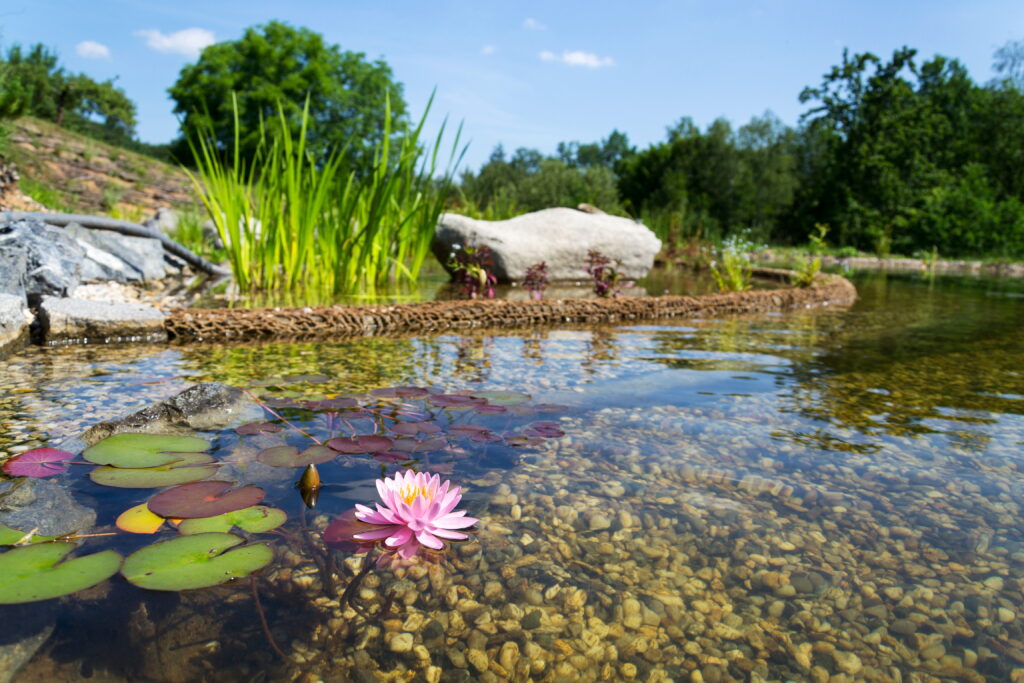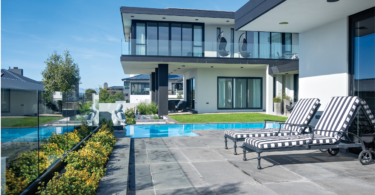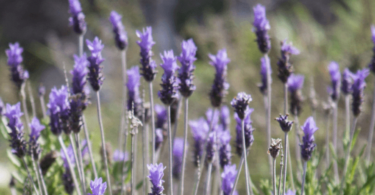Imagine your next swim – chemical-free and teeming with life – that’s the essence of the luxurious pool we desire! Success holds different meanings for different people, but we see a living pool as a significant symbol of achievement and style for gardeners. Also known as eco-pools or Earth pools, these swimmable mini-wetland-lakes offer a serene return to Mother Nature.

Replace chlorine with nature’s green
An eco-pool employs a biological filtration system, utilising natural processes, microorganisms, and select smart plants. With a balanced ecosystem, biofilters actually purify water more effectively than traditional pool chemicals. While chemicals target bacteria and algae but leave harmful substances like ammonia and phosphates, biofilters eliminate these, resulting in drinkable water. Incorporating plants and beneficial microscopic life like good bacteria, plant plankton, and zooplankton, along with a sand/gravel filter and powerful pump, aids in trapping algae and insoluble material in the water.
Did you know?
Converting your existing pool into a natural one is easily achievable as conventional setups are highly adaptable for such transformations. Explore various creative options to turn your pool into a living wetland wonderland, but ensure you seek expert advice and professional services.

Will you swim in a swamp?
No. A regeneration grow zone with plant life and a gravel bed is created adjacent to the primary swimming area, which remains clear like a standard pool. Smart plants and substrate in the designated grow zone act as a natural water filter. Water circulates between the regeneration zone and the swimming section, creating a wetland purification system. Families opt for different designs, from wrap-around wetlands to lush living islands within the pool.
Top tip: Cover the swimming area to prevent evaporation during the upcoming hot summer. Keep the regeneration grow zone open for sunlight to reach the plants.
Create your natural waves
Setting up a natural pool can be initially costly, requiring expert guidance on biofiltration for a balanced water ecosystem. Maintenance involves minimal cleaning of the pool floor and surface leaf skimming, easily done with standard equipment. Advantages include:
- Health: No chemicals mean no skin irritations, eye problems, or hair damage caused by chlorine’s carcinogenic properties.
- Financial: Significant savings on expenses for chemicals and electricity.
- Environmental: Work in harmony with Mother Nature, contributing positively to our green footprint. Living pools provide habitat for endangered life forms, benefiting the environment.
- Aesthetic: Enjoy your natural pool year-round, an evergreen, hassle-free garden.

Expert advice: Neil from Nature Life Pools shares his top five tips for starting a living pool. Find more insights on their website and at your favourite GCA Garden Centre:
- Use indigenous water plants in the grow zone for low-nutrient systems, preventing algae growth.
- Avoid tropical plants that need feeding, affecting the pool’s ecosystem negatively. Install specialized containers inside the pool to cater to tropical plants safely.
- Recommended local wetland plants include soft rush (Juncus effusus) and mat/umbrella sedge (Cyperus textilis) for sunny spots, and water parsnip (Berula erectasemi) for semi-shaded areas.
- Ensure proper circulation; the substrate should flow through all water and plant pathways.
- Understanding biofiltration is crucial; consult an expert to avoid disappointments like a turned-to-swamp pool.
Access Life is a Garden’s online GCA Garden Centre directory for gorgeous water plants to add to your living wetland. Remember to ask for help when choosing the right plant for the right job. www.lifeisagarden.co.za/category/garden-centres










Leave a Comment